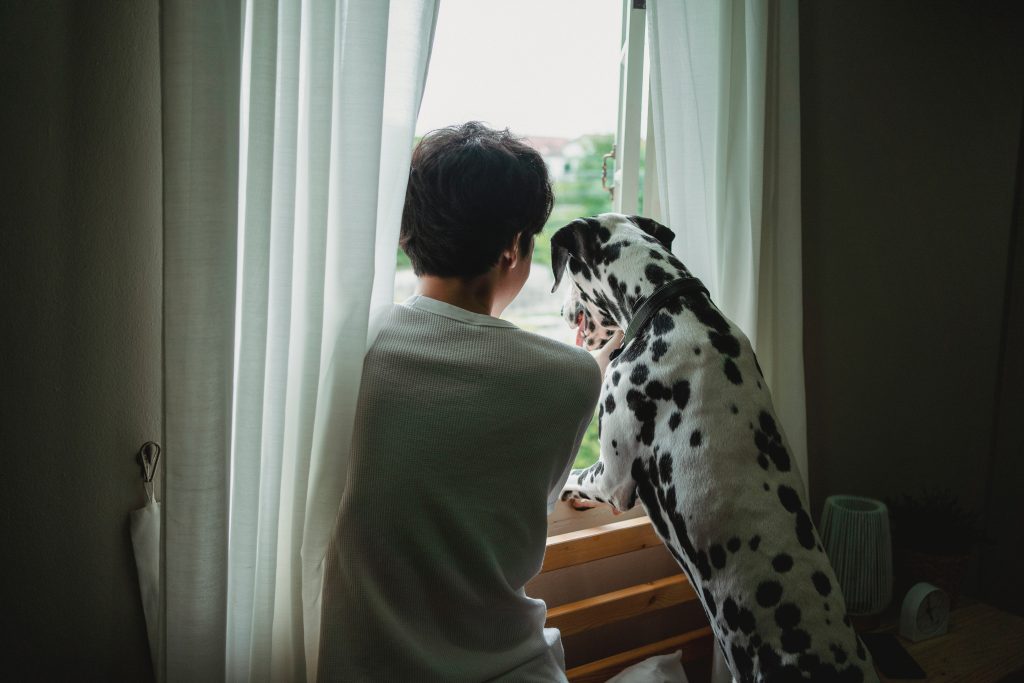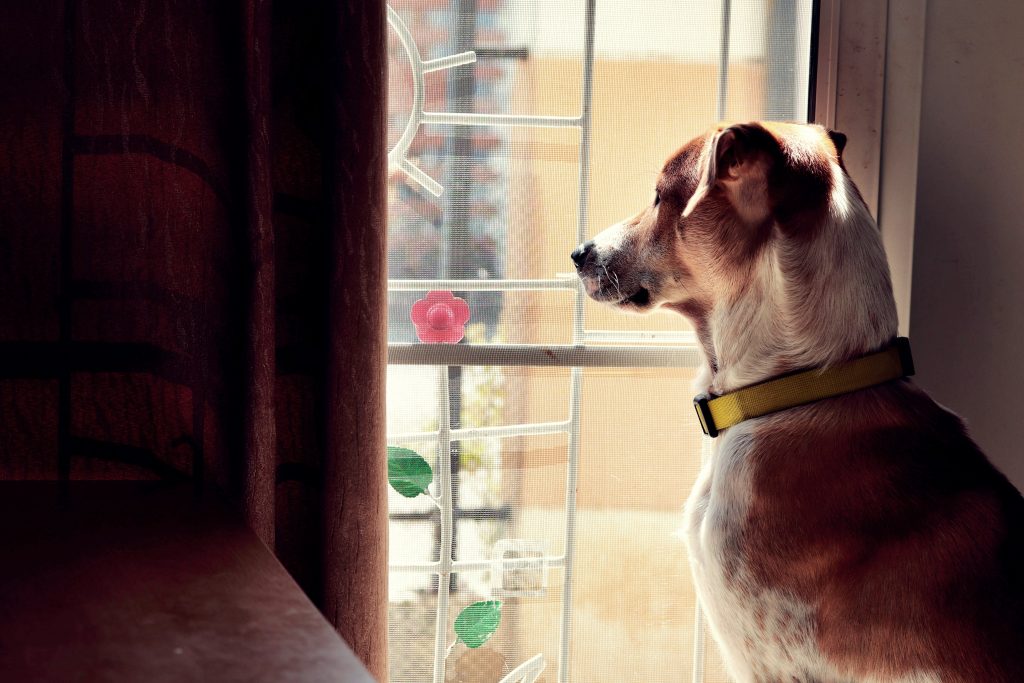Picture this: you’re preparing to leave the house, and as you grab your keys and put on your coat, your faithful canine companion starts displaying signs of distress. Whining, pacing, destructive behavior, or even incessant barking fill the air, leaving you torn between your daily obligations and your dog’s obvious anxiety. Welcome to the world of separation anxiety in dogs.
In this blog article, we delve into the often misunderstood and challenging topic of separation anxiety in dogs. Whether you’re a concerned dog owner seeking guidance or simply intrigued by the complexities of canine behavior, we’re here to shed light on this common condition and provide practical strategies to help your furry friend find comfort and security when left alone.

What is Separation Anxiety?
Separation anxiety in dogs is a behavioral condition characterized by extreme distress and anxiety when a dog is separated from their owner or left alone. It is a common issue that can affect dogs of all ages, breeds, and backgrounds. Here are some key aspects to understand about separation anxiety in dogs:
- Symptoms: Dogs with separation anxiety may exhibit a range of behaviors when left alone. These can include excessive whining, barking, howling, destructive chewing or scratching, pacing, attempts to escape, urinating or defecating indoors (even if they are otherwise house-trained), and self-injurious behaviors. These behaviors typically occur within a short period after the owner’s departure.
- Causes: Separation anxiety can have multiple underlying causes. Some dogs may develop anxiety due to past traumatic experiences, such as being abandoned or experiencing a significant change in their environment. Dogs that have not been adequately socialized or have a strong attachment to their owners are also more prone to separation anxiety. Additionally, a sudden change in routine or a significant life event can trigger separation anxiety in some dogs.
- Diagnosis: It’s important to distinguish separation anxiety from other behavioral issues or medical conditions that may present similar symptoms. Consulting with a veterinarian or a professional dog behaviorist can help accurately diagnose separation anxiety and rule out any underlying health concerns.
- Treatment and Management: The treatment of separation anxiety usually involves a combination of behavior modification techniques, training, and environmental management. The goal is to help the dog develop a sense of security and confidence when left alone. Gradual desensitization and counter-conditioning techniques, which involve gradually increasing the duration of absences and pairing them with positive experiences, can help alleviate anxiety. Providing engaging and stimulating activities, such as interactive toys or puzzles, can also help distract the dog and keep them occupied.
- Medication: In severe cases of separation anxiety, medication prescribed by a veterinarian may be recommended as part of the treatment plan. Anti-anxiety medications or selective serotonin reuptake inhibitors (SSRIs) can help reduce anxiety levels and make behavior modification more effective. However, medication should always be used in conjunction with a comprehensive behavior modification program.
- Professional Help: If your dog’s separation anxiety is severe or does not improve with home-based strategies, seeking the assistance of a professional dog trainer or behaviorist who specializes in separation anxiety can be beneficial. They can provide tailored guidance, develop a personalized treatment plan, and offer ongoing support throughout the process.
How to Handle Separation Anxiety
Handling separation anxiety in dogs requires a patient and systematic approach. Here are some strategies and techniques that can help alleviate separation anxiety and promote a sense of security and calmness when your dog is left alone:
- Gradual Desensitization: Gradual desensitization involves exposing your dog to short periods of separation in a controlled and positive manner. Start with very brief absences and gradually increase the duration over time. Pair each absence with a positive experience, such as giving your dog a special treat or a puzzle toy filled with food. This process helps your dog associate being alone with positive rewards.
- Counter-conditioning: Counter-conditioning involves changing your dog’s emotional response to being left alone. Create positive associations by engaging in activities your dog loves, such as playing with a favorite toy, before leaving. This can help shift their focus away from your departure and make the experience more enjoyable.
- Establish a Calm Pre-Departure Routine: Dogs are perceptive, and they can pick up on cues that indicate you’re about to leave. To minimize anxiety, establish a calm pre-departure routine that doesn’t create anticipation or anxiety for your dog. Engage in low-key activities, such as reading a book or listening to soothing music, before leaving.
- Environmental Enrichment: Provide your dog with plenty of mental and physical stimulation when you’re home. Engage in activities like daily walks, interactive play sessions, and puzzle toys to tire them out and keep their minds occupied. A tired and mentally stimulated dog is more likely to relax and rest when left alone.
- Safe Space: Create a comfortable and secure space for your dog to retreat to when you’re away. This can be a designated area with their bed, toys, and familiar scents. Consider using pheromone diffusers or calming products to create a soothing environment. Additionally, playing soft, calming music or leaving a TV or radio on can help provide background noise that may help ease anxiety.
- Avoid Punishment: Punishment or scolding your dog for displaying anxious behaviors can exacerbate their anxiety and worsen the problem. Instead, focus on positive reinforcement and reward calm behavior. Reward your dog when they remain calm during brief absences and gradually extend the time as they become more comfortable.

Through gradual desensitization, counter-conditioning, establishing calm routines, and providing environmental enrichment, we can help shift our dogs’ emotional responses to being alone. Creating a safe and comforting space, avoiding punishment, and seeking professional help when needed are essential components of managing separation anxiety effectively.
It’s important to remember that addressing separation anxiety takes time, consistency, and patience. Every dog is unique, and what works for one may not work for another. Each step forward is a small victory, and setbacks are a natural part of the process.
By taking the time to understand and support our dogs through their anxiety, we can help them develop the confidence and coping mechanisms necessary to navigate periods of solitude. With our guidance and unwavering love, we can create an environment that fosters a sense of security and contentment, even when we are not by their side.
Read more blog posts on our website here.



